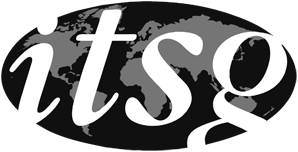Corporate Tax Guide: Canada

Members:
- Michael Cadesky (Cadesky Tax)
- Matthew Cho (Cadesky Tax)
- Grace Chow (Cadesky Tax)
- Shirley He (Cadesky Tax)
- Marco Jotic (Cadesky Tax)
- Dean Smith (Cadesky Tax)
- Peter Weissman (Cadesky Tax)
- Nancy Yan (Cadesky Tax)
- Ian Pryor (Pryor Tax Law)
- Jonathan L. Richler (Richler Tax Law)
|
1. Country
The information is valid for the entire country except where indicated. For example, in the case of Malaysia, Labuan is part of Malaysia but has a special tax regime, so this is noted. |
Canada – entire country | ||||||||||||||||||||||||||||||||
|
The corporate tax rate shown is the typical corporate tax rate that a domestic corporation owned by non-resident persons would pay. The tax rate does not include withholding tax on dividends, but does include a distribution tax shown separately if applicable. Certain countries have a low corporate tax rate, but charge an additional tax when a dividend is distributed. Because this tax is paid by the corporation, and not deducted from the amount of the dividend itself, it is not a dividend withholding tax. As a result, it typically cannot be reduced by an international tax treaty. |
25% - 27%, varies by province | ||||||||||||||||||||||||||||||||
|
The basis of taxation for a corporation will typically be one of:
|
World income | ||||||||||||||||||||||||||||||||
|
Where non-resident corporation carries on business in a country, business profits may be subject to corporate tax. In addition, a branch profits tax may apply in lieu of dividend withholding tax. This branch profits tax applies to the after tax profits, typically at a fixed percentage. An international tax treaty may reduce the rate of branch profits tax, typically to the rate provided for dividend withholding. |
Yes. 25%, reduced by Treaty often to 5%. | ||||||||||||||||||||||||||||||||
|
The common forms of business entity are noted. In addition, the entities which are flow through entities for U.S. tax purposes are indicated. |
Corporation, Partnership*, Limited Partnership*, Business Trust, Unlimited Liability Company* *Flow-through for U.S. tax purposes. | ||||||||||||||||||||||||||||||||
|
Capital gains may be fully taxed, partially taxed or not at all. In certain countries, an exemption, called the participation exemption, will apply to exempt from tax a capital gain from disposition of a substantial holding of shares of a subsidiary. Where a participation exemption is applicable, it is noted together with a summary of the main conditions. |
50% of capital gain included in income, so taxed at effectively half of normal rate. No participation type exemption. | ||||||||||||||||||||||||||||||||
|
Certain countries allow group taxation, otherwise known as consolidated tax filing. Here the tax returns of a group of corporations in the country may be combined together, which can be useful. If group taxation is permitted, it is noted along with the main conditions. |
Not permitted. | ||||||||||||||||||||||||||||||||
|
Countries offer various kinds of special exemptions and incentives. Examples are a reduced tax rate, a tax holiday, a tax credit on the purchase of equipment, special accelerated deductions for deprecation, incentives for R&D, and various others. Here the major items are noted. |
| ||||||||||||||||||||||||||||||||
|
Many countries have thin capitalization rules which limit or deny the deduction of interest expense in certain circumstances. For example, if debt exceeds three times equity, a proportionate amount of interest expense may not be deductible. Limitations take various forms, restricting the interest expense deduction to a percentage of profit, deeming the debt to be equity and the interest to be a payment of dividends, and various other rules which may blend of these principles. Where a country has thin capitalization rules, they are briefly described. |
Yes. 1.5:1 debt to equity ratio, excess interest deemed a dividend. Debt includes only related party foreign debt (25% shareholder). | ||||||||||||||||||||||||||||||||
|
Many countries have transfer pricing rules. They very often follow the OECD guidelines and the arms length principle. Some countries have specific rules which apply in certain cases. In addition, some countries allow for a selection of the most appropriate transfer pricing methodology in the circumstances, while other countries follow a hierarchy of methods, with the CUP method (comparable uncontrolled price) often ranking first. The transfer pricing rules are briefly explained. |
Yes. OECD Guidelines but hierarchy of methods. CUP method ranked first. Aggressive enforcement requirement for records and documentation. 10% penalty on transfer pricing adjustments above a threshold. | ||||||||||||||||||||||||||||||||
|
11. CFC Rules
Many countries tax passive income earned in controlled foreign corporations (CFC’s) on an imputation basis while active income is not taxed. Such CFC rules are usually complex and vary significantly in what is considered passive income, and how foreign tax paid is taken into account. Some countries approach CFC rules on the basis of whether or not the foreign corporation is resident in a low tax jurisdiction or a tax haven. This may be done through a black list of countries. The general overview of CFC rules is described in simple terms. |
Yes. Applies to controlled foreign affiliate (foreign corporation controlled by Canadian corporation alone or together with related foreign shareholders). Passive income and capital gains taxed on imputed basis. Deduction from income for foreign tax multiplied by a factor (currently 4). Many exemptions for income within foreign corporate groups (10% shareholding). Inter-corporate dividends, interest, rent, management fees, capital gains on sale of shares of foreign corporation all usually exempt of CFC rules. | ||||||||||||||||||||||||||||||||
|
Profits repatriated by way of dividends from a subsidiary to a parent company are typically taxed in one of three ways:
|
Complex system. Four components.
| ||||||||||||||||||||||||||||||||
|
Most countries allow a foreign tax credit based on a formula, typically net foreign income over the net income times taxes payable. This limits the foreign tax credit to roughly the domestic tax otherwise applicable to the foreign income. There are numerous variations and technical rules in the details of foreign tax credit calculations. Where a foreign tax credit is allowed, the general principles are described. |
Yes. Segregated into business and non-business and country by country. Typical calculation of net foreign income over net income times tax otherwise payable. 3 year carryback, 10 years forward for unused foreign business income tax (not available for foreign non-business income tax). No credit allowed on withholding tax levied on dividends from foreign affiliate. | ||||||||||||||||||||||||||||||||
|
14. Losses
Losses typically can be carried forwards for a period of years, and sometimes can be carried back. Losses may be segregated into capital losses and non capital losses. |
Losses segregated into capital and non-capital, 3 year carryback, 20 year carryforward. Restrictions on a change of control. | ||||||||||||||||||||||||||||||||
|
It is not practical to list all of the tax treaties which a country has in a simple guide like this. Accordingly, a link is provided in each case to the tax treaties. Some countries have entered into Tax Information Exchange Agreements (TIEA). Treaties are more and more containing provisions that limit benefits (LOB provisions). |
Yes.
| ||||||||||||||||||||||||||||||||
|
Withholding tax rates vary considerably from treaty to treaty, and countries may have domestic exemptions applicable in certain circumstances (for example copyright royalties, interest paid to arm’s length persons, etc.). A table shows the typical rates but cannot adequately summarize all of the details. The applicable treaty should be consulted. |
| ||||||||||||||||||||||||||||||||
|
17. Taxation Year
Some countries allow for the selection of year-end while other countries specify a particular year-end which all business entities must have. Normally the taxation year cannot exceed 12 months. Where it can exceed 12 months, this is noted. |
Any year-end is available by choice. Cannot exceed 53 weeks. Cannot be changed once selected without approval of tax authority or triggering event (change of control or amalgamation). | ||||||||||||||||||||||||||||||||
|
This is the due date for filing a tax return. Where extensions are available, this is noted. |
Due 6 months after year-end. No extensions. | ||||||||||||||||||||||||||||||||
|
19. Tax Instalments
The typical tax instalment requirements are noted. |
Yes, typically monthly based on previous year. | ||||||||||||||||||||||||||||||||
|
20. Payment of Tax
This is the date when the corporate tax owing for the year must be paid. It may be different from the tax return filing due date. |
Due 2 months after year-end (normally an estimate is paid and adjusted when tax return is filed). | ||||||||||||||||||||||||||||||||
|
This is the period after which the tax department cannot in normal circumstances reassess a taxation year. It is sometimes referenced to the end of the taxation year and sometimes to the date of the first assessment of that taxation year. |
| ||||||||||||||||||||||||||||||||
|
If a country has exchange controls, this is noted, together with the main requirements. |
No. | ||||||||||||||||||||||||||||||||
|
23. VAT
A VAT tax system typically provides that the supply of goods and services is classified as taxable, tax exempt, or zero rated. Where a business is engaged in an activity which is taxable, it must charge VAT on its revenue, and can claim a refund of VAT on its expenditures. Where the activity is exempt, it does not charge VAT on its revenue, and cannot claim back VAT paid. Where the entity is engaged in activities which are zero rated (typically agriculture, food services and exports), then it can claim back VAT which it has paid on its expenditures, and does not charge VAT on its revenue. If a country has a typical VAT system, this is noted. If a country has no VAT system but a sales tax system, this is indicated. Some countries may have a mixture, and taxes may apply at different levels (federal and state for example). |
Yes. Federal at 5%, provincial rates and systems vary from 0% to 12%. VAT type system federally and in many provinces. | ||||||||||||||||||||||||||||||||
|
Stamp duty, or land transfer tax, can apply on such things as the transfer of shares, land, or the issuance of bonds or debentures. This is described together with the applicable rates. |
Generally only for land transfers. Rate varies by province (e.g., Ontario 1.5% - 2%, City of Toronto additional 2%). | ||||||||||||||||||||||||||||||||
|
25. Capital Tax
If capital tax is payable, this is described. Capital tax may apply in specialized industries, such as banking and insurance, even if a country does not generally apply a capital tax to corporations. |
Generally none. | ||||||||||||||||||||||||||||||||
|
26. Other Taxes
Where significant, other taxes are noted. |
Payroll taxes, other levies such as worker compensation (for injury). | ||||||||||||||||||||||||||||||||
|
Anti-Avoidance Rules take many forms, the most common ones are a general anti-avoidance rule, treaty shopping limitations, the requirement for economic substance (or a business purpose in carrying out transaction) and specific anti-avoidance rules for particular purposes. A very brief overview of the anti-avoidance rules is described. |
Yes. GAAR. Threshold is abusive tax avoidance that violates clear object and spirit of tax legislation. Treaty Shopping: No express rules. Courts have refused to apply GAAR to treaty shopping. Economic Substance: No concept of this. Other: Numerous specific anti-avoidance rules and limitations. | ||||||||||||||||||||||||||||||||
|
Where a non-resident person holds shares of a corporation established in the country listed, the capital gain which results may be taxable or not taxable depending on the circumstances and, possibly, the existences of an international tax treaty. The general rules are noted. |
Sale of shares by non-resident not taxable unless over half of value derived from Canadian real estate or Canadian resource properties. Sale of Canadian business assets is taxable. | ||||||||||||||||||||||||||||||||
|
Where a corporation is acquired through the purchase of shares, sometimes a step up is allowed so that the cost of its assets can be revalued. The main rules are briefly summarized. |
Step up available but only for non-depreciable capital property (basically land and shares of corporations or partnership interests). | ||||||||||||||||||||||||||||||||
|
30. Use of Rulings
In some countries, rulings are commonly used (and sometimes even required). In other countries the system is either unavailable or not commonly used except in special circumstances. |
Rulings not required. Only used in special situations. | ||||||||||||||||||||||||||||||||
|
31. Other
Other important aspects of the tax system are noted. |
Extensive reporting required for Canadian corporation owing foreign subsidiaries and for transactions with related non-residents. | ||||||||||||||||||||||||||||||||

 Login
Login

















































